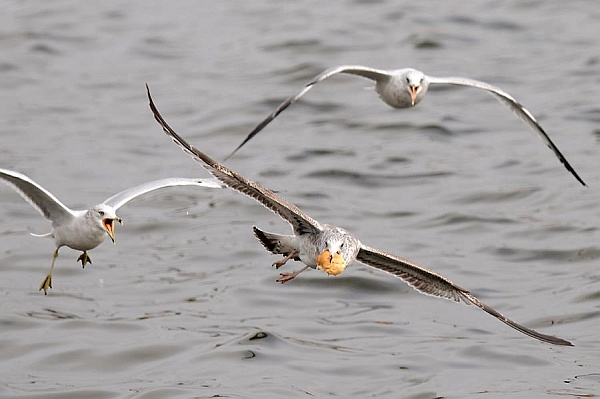
Believe it or not, ring-billed gulls were scarce in Pennsylvania 100 years ago.
Along with many other birds, gulls were killed for their feathers to adorn ladies’ hats. Back then their breeding range shrank to the areas uninhabited by humans — the prairie potholes of the U.S. and Canada.
After the 1917 Migratory Birds Convention Act was passed, it took the gulls a while to recover but by the 1970’s they were on a roll. Between 1976 and 1984 their breeding numbers increased 11% per year in the Great Lakes region.
The reason for their success can be summed up in this picture: It’s safe to be around people now and gulls are opportunistic feeders. They’re more than happy to eat what we eat.
“Get away! This bread is mine!”
(photo of ring-billed gulls at Pymatuning spillway (where the ducks walk on the fish) by Steve Gosser)
I saw some gulls in the Rio Grande last weekend. I had never expected to see any around here, but there was 40-50. And some coots were with them too. None of my New Mexico guides even have gulls in them, so I have no idea what they are. Here’s a picture of them. I’ve also been seeing lots of cranes flying by and apparently they winter a bit south of Albuquerque.
http://www.flickr.com/photos/steve_valasek/6366831589/
Out on a drive on Sunday we came across a field in Northern Trumbull Co, Ohio that was covered in gulls. I have never seen so many in one place before. They would wheel and turn, land and take off just like flocks of starlings! only white and shiny in the sun. Must have been 20 acres just covered in them. Thats where all the Mall Gulls went to!!!